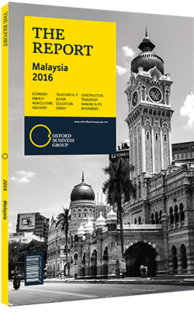Mohamad Salim, Group Managing Director, Malaysian Resources Corporation Berhad (MRCB): Interview

Interview: Mohamad Salim
How crucial is public transport to ensuring the sustainable expansion of Kuala Lumpur?
MOHAMAD SALIM: The Malaysian government now emphasises mass rapid transit (MRT), light rail transit and monorail in order to stimulate the opening-up and growth of new areas of development. For example, from the area of Sungei Buloh, a subdistrict of Petaling, the public can now access downtown Kuala Lumpur’s Central Business Direct (CBD) in 15 minutes, and the area is no doubt poised for growth as a result. In addition, we are developing a new CBD known as Cyberjaya City Centre, which is very near to Putrajaya. There will also be two MRT stations there, which will open up the township to new areas of development.
How can rising development costs be balanced against the demand for affordable housing?
SALIM: As increasingly large numbers of people migrate to Greater Kuala Lumpur each year in search of jobs and opportunities, demand for affordable housing grows. In response, the government launched the 1Malaysia People’s Housing Programme in 2012, a successful model for providing affordable homes to those who would otherwise find it difficult to become homeowners.
MRCB also offers affordable homes in Kajang, Perak and Semarak City. At the Bandar Seri Iskandar township in Perak, a total of 736 units of double-storey affordable homes are being developed commencing in 2017, while we are developing the final phase of Taman Kajang Utama in Kajang, which offers 566 units of affordable apartments that we have started to build in 2016. Semarak City is unique as we are providing affordable houses together with houses priced for the middle market. The idea is to combine mid- to high-tier housing with affordable homes, emphasising inclusiveness and minimising segregation.
We are also looking at how to soften the knock-on effect of rising land values on the price of homes for buyers. This is becoming more challenging as the cost of labour and building materials continue to increase. For larger developers, prefabricated homes are the future, as this method of construction cuts labour costs by 50%. Prefabricated housing also saves substantial time, cuts down on human error and allows for building materials to be purchased wholesale, resulting in greater efficiency across the board. The sector as a whole has slowed down considerably since the introduction of the central bank’s cooling measures a few years ago.
It is still a challenging task for homebuyers to secure housing loans, and easing any form of restriction would help in terms of renewing interest and demand in the industry overall. For us specifically, we have the advantage of strategically located developments, thanks to our transit-oriented focus, which affords us a certain degree of inelastic demand.
What are the key drivers and trends behind township developments in Malaysia?
SALIM: It usually takes around 10 years for a township to come to maturity, and while you have to bring in residential and commercial housing, you must also consider the entire mix, including hospitals, schools and other required services that add value to the development. Home buyers are very selective now and their emphasis is on a modern lifestyle. Hence, lifestyle is what is really driving township developments, and key to their success is correctly anticipating what customers expect from the township to empower their desired way of life. MRCB prioritises transit and CBDs in the construction of its townships.
For example, the first stage in the development of Kwasa Utama, within the larger the 2000-acre Kwasa Damansara township, is its MRT stations, office spaces and a mall, which are critical for its growth. Residential housing can then spring up once the backbone of the township has been established.
You have reached the limit of premium articles you can view for free.
Choose from the options below to purchase print or digital editions of our Reports. You can also purchase a website subscription giving you unlimited access to all of our Reports online for 12 months.
If you have already purchased this Report or have a website subscription, please login to continue.

